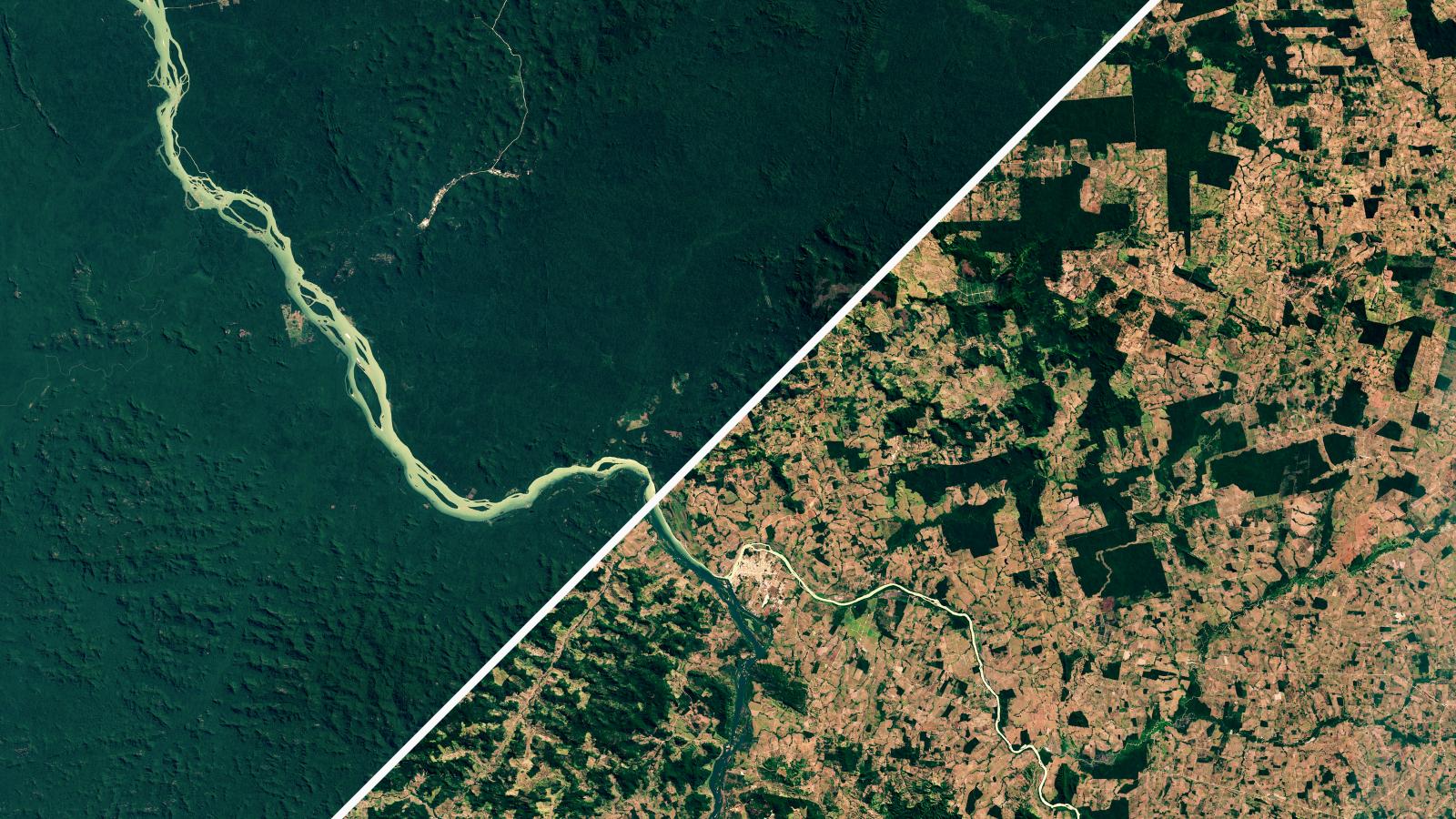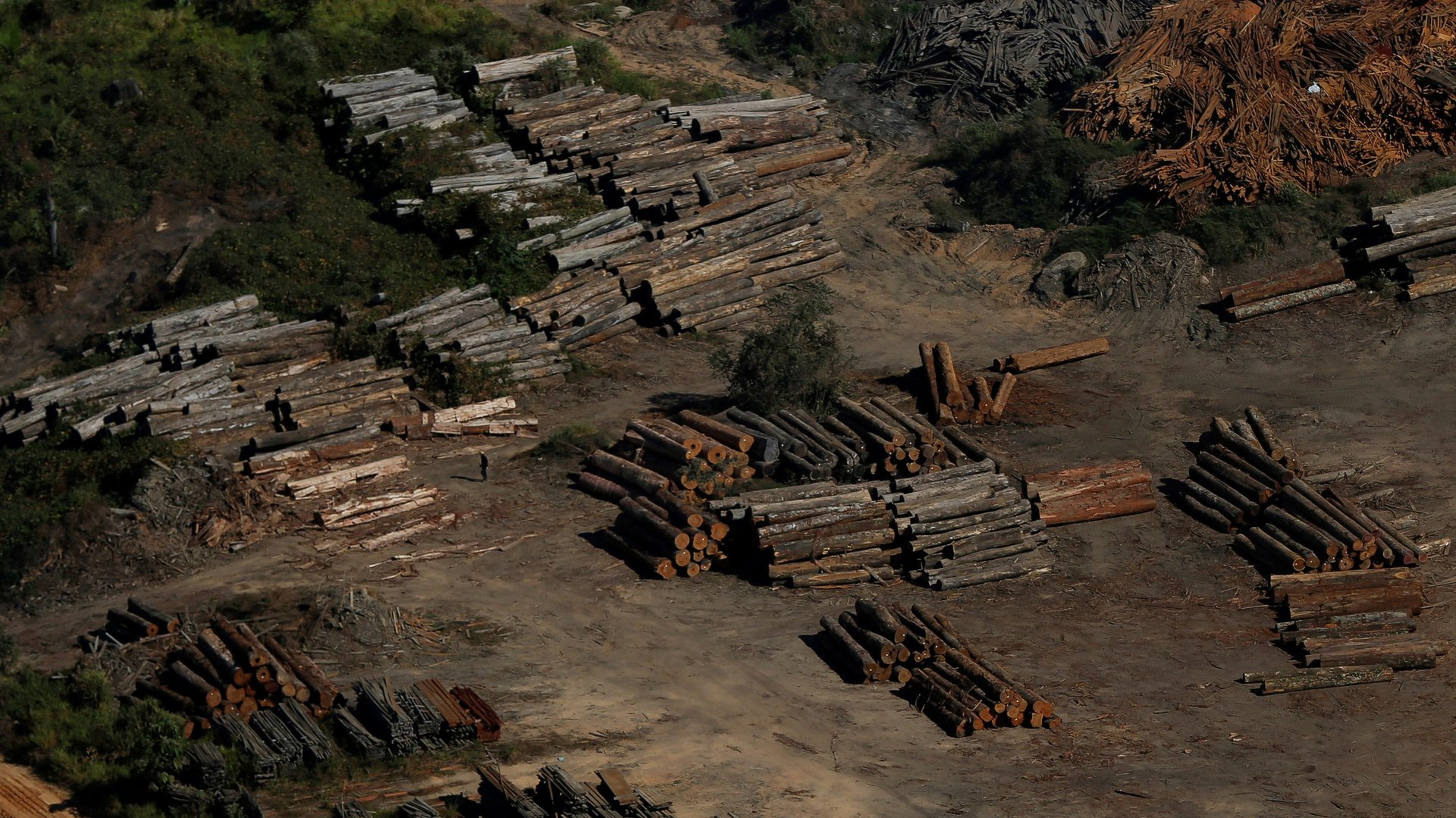Amazon deforestation is accelerating under Bolsonaro, and scientists fear a tipping point
The latest data from Brazilian satellites shows (link in Portuguese) that deforestation of the Brazilian Amazon is accelerating, leading experts to fear that it could be approaching a tipping point past which the rainforest can’t recover.


The latest data from Brazilian satellites shows (link in Portuguese) that deforestation of the Brazilian Amazon is accelerating, leading experts to fear that it could be approaching a tipping point past which the rainforest can’t recover.
The loss amounts to more than three football fields a minute, and deforestation so far in July has hit 1,345 sq km (519 sq miles). That figure is a third higher than the previous one-month record since the nation’s Deter B satellite started monitoring deforestation in 2015, the Guardian reports.
Scientists fear that past a certain point of deforestation, the rainforest could be in jeopardy of degrading into a savannah. Tropical rainforests are critical storage sites for carbon dioxide, keeping the greenhouse gas in its solid carbon state, locked away in soils and trees. The Amazon is the world’s largest tropical rainforest, making its protection critical to preventing runaway climate change.

The Amazon is also a biodiversity hotspot, and includes the most biodiverse place on Earth, making its preservation a matter of slowing down plant and animal extinctions, too. Hundreds of thousands of indigenous people in more than 400 tribes also live in the Amazon, and rely on the rainforest to support their lives and preserve their cultures.
In many cases, tribes already struggle to defend their land from invasion (pdf) by illegal loggers and miners. Without strong governmental support to help defend against invasion, and in light of recent major funding cuts and firings at the Brazilian indigenous affairs agency, the reserve system is extremely vulnerable.
Indigenous reserves are often the only bulwark against deforestation in the Brazilian Amazon. Research has shown that indigenous management practices are the best approach to maintaining the health of tropical rainforests globally. And in the video below, satellite imagery confirms the research—from 1984 to 2018, deforestation crept all the way up to and against the exact contours of the Xingu Indigenous Park in Brazil:
Where others see crucial ecosystems, Jair Bolsonaro, Brazil’s president, sees potential for economic gain by opening those reserves to agriculture and mining. “Where there is indigenous land,” he has said, “there is wealth underneath it.”
Bolsonaro has tried to dispute the validity of the official deforestation numbers from the federal government, calling them lies. Just this week he demanded that the numbers be shown to him before they are released publicly, so that he does not get “caught with his pants down,” the Guardian notes.
In the past 50 years, one-fifth of the Amazon has already been cut and burned to make way for logging, ranching, or mining. The denuded area spans some 300,000 sq miles, which, as the Intercept points out, is an area larger than Texas—the US state the cleared land most resembles, now that it is covered in cattle ranches.
Emboldened by Bolsonaro’s anti-indigenous rhetoric, illegal land-grabs within indigenous territory are becoming more common, and more brazen. “We know what happens when the state does nothing,” Marcelino Da Silva, a member of the Apurinã tribe in the Brazilian Amazon, told the Intercept. “We know how quickly the forest can disappear.”